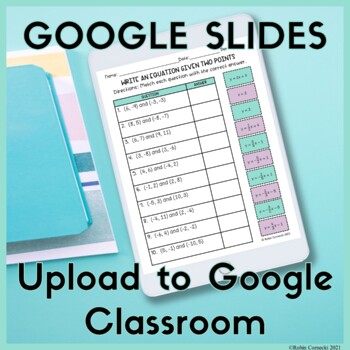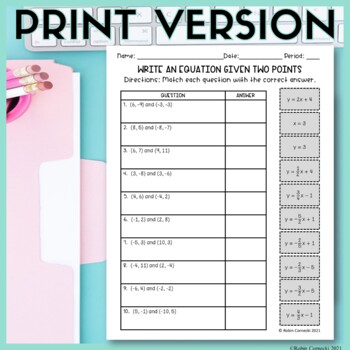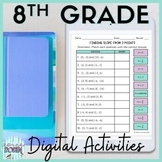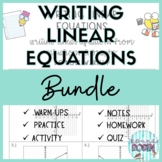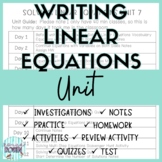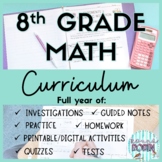Writing Linear Equations in Slope Intercept Form Given Two Points Activity

Also included in
- Are you looking for Digital Resources for your 8th-grade mathematics classroom? Look no further than with this GROWING BUNDLE of 8th-grade mathematics digital resources including activities on Real Numbers, Exponents, Scientific Notation, Proportional Relationships, Rate of Change, Slope, Writing LPrice $67.20Original Price $84.00Save $16.80
- Teach your middle school math students everything they need to know about Writing Linear Equations in Slope-Intercept form from Situations and Graphs. Students will write linear equations in slope-intercept form from a graph, verbal description (situation), and through 2 ordered pairs. This investigPrice $14.40Original Price $18.00Save $3.60
- Are you teaching Writing Linear Equations to your 8th-grade math students? Look no further than this complete Writing Linear Equations Unit Bundle. Topics include Writing Linear Equations from Situations and Graphs, Writing Linear Equations from a Table, Linear Relationships, and Bivariate Data. ThiPrice $24.40Original Price $30.50Save $6.10
- Are you looking for an entire 8th Grade Math Curriculum with guided notes, activities, AND editable assessments? Look no further than this 8th-grade math GROWING curriculum full year bundle. The following 8th-grade Math Curriculum is wholly aligned with Common Core State Standards for 8th grade iPrice $292.80Original Price $366.00Save $73.20
Description
Give your middle school math or Algebra students a fun and engaging way to practice their understanding of Writing Linear Equations in Slope Intercept Form Given Two Points with this digital or printable review activity. Students will write an equation in slope-intercept form of the line that passes through the given points.
✅Students will practice finding the slope of the line through each pair of given points using the slope formula and then write the linear equation in slope-intercept form.
This Drag and Drop Activity is zero prep and includes 10 questions that students can drag and drop the answers to match the question.
✨This resource is perfect for Distance Learning or in the classroom. It can be used with Google™ or Microsoft™. When using with Microsoft™, go to File -> Download as a Powerpoint.
⭐You must have a free Google account to access the document.
When you purchase, you will receive a PDF containing the link to this file, a printable version, teacher instructions, and an answer key.
⭐ These activities can be used digitally or as a hands-on activity with the provided pdf handouts included. ⭐
✨The video is for demonstration purposes only and does not include the correct answers!
Don't forget to leave a review to earn credit towards future resources at no extra cost to you!
You may also like:
- Writing Linear Equations From Graphs
- Finding Slope from 2 Points Digital Activity.
- Writing Linear Equations in Slope-Intercept Form Holiday Activity
- Writing Linear Equations in Slope-Intercept Form Winter Activity
Let's be social!


